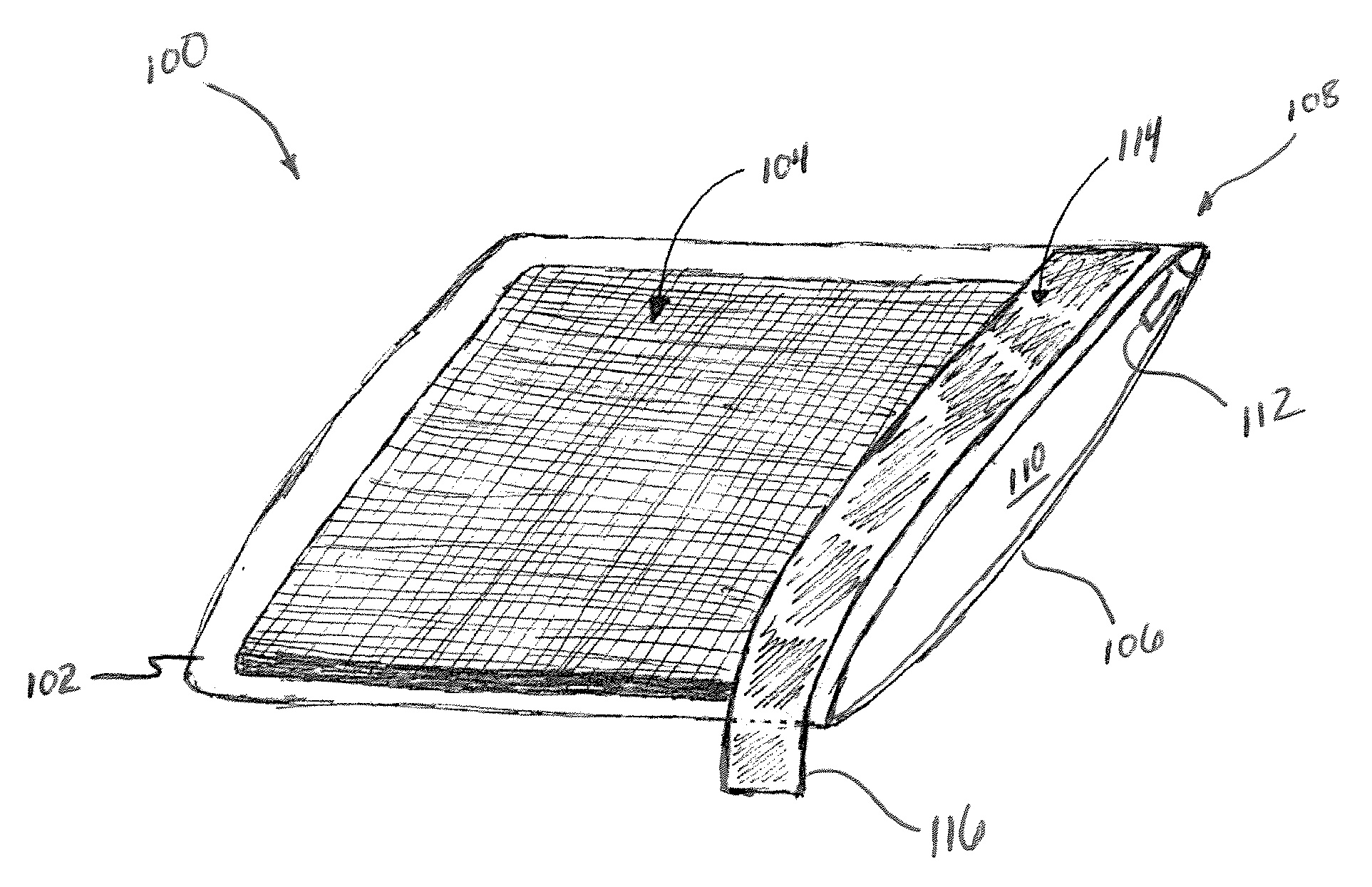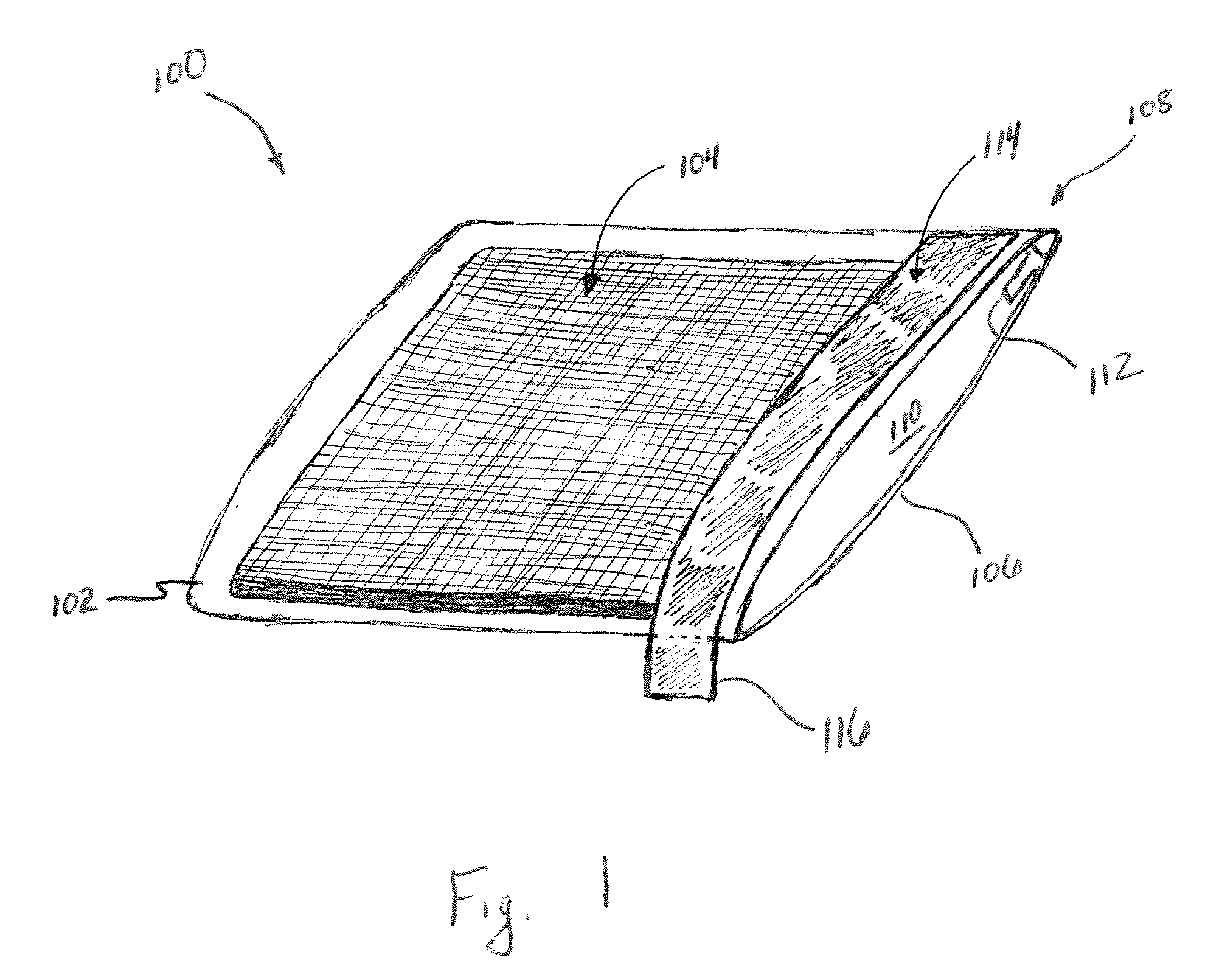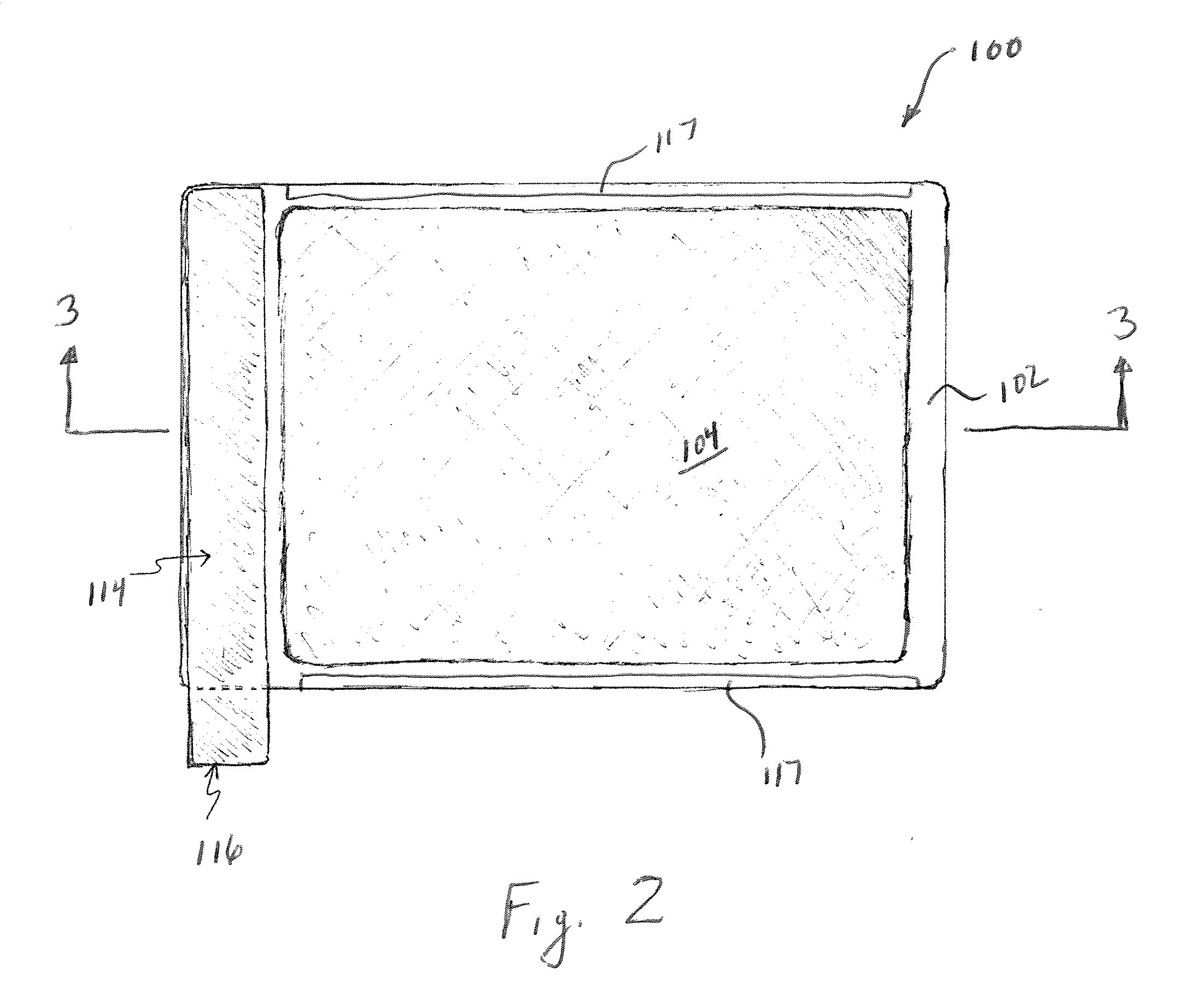Surgical depilatory device
a technology of depilatory device and surgical device, which is applied in the field of surgical device, can solve the problems of hair falling into the sheets covering the operating room table, razors themselves intrusive instruments, and hair not being completely removed, so as to prevent hair loss, protect the epidermis, and reduce the time necessary
- Summary
- Abstract
- Description
- Claims
- Application Information
AI Technical Summary
Benefits of technology
Problems solved by technology
Method used
Image
Examples
Embodiment Construction
[0020] In an embodiment as depicted in FIG. 1, the device 100 comprises adhesive layer 104a flexible sheet or backing material 102 with an adhesive layer 104 adjoined thereto. The adhesive layer 104 could be composed of organic or synthetic compounds suitably configured to adhere to bodily hair or other debris that could contaminate a surgical site if not removed therefrom. When the backing material 102 is removed from the surgical site, the adhesive layer 104, having bonded to the body hair or other debris, pulls the hairs from the follicles while leaving the epidermis intact according to one embodiment. For the purposes of clarity and brevity in this description, body hair, debris, and other particulates that can be bonded to the adhesive layer 104 and subsequently removed from around a surgical site will be generally referred to as potential contaminants since one objective of removing the hair, debris, and other particulates is to prevent contamination of the surgical site.
[002...
PUM
 Login to View More
Login to View More Abstract
Description
Claims
Application Information
 Login to View More
Login to View More - R&D
- Intellectual Property
- Life Sciences
- Materials
- Tech Scout
- Unparalleled Data Quality
- Higher Quality Content
- 60% Fewer Hallucinations
Browse by: Latest US Patents, China's latest patents, Technical Efficacy Thesaurus, Application Domain, Technology Topic, Popular Technical Reports.
© 2025 PatSnap. All rights reserved.Legal|Privacy policy|Modern Slavery Act Transparency Statement|Sitemap|About US| Contact US: help@patsnap.com



